Nearly everyone I met in Spain praised the beauty of Cartagena. They said it was one of the most beautiful Spanish towns, with ancient history and freshness of a sea breeze. As I was planning my vacations in Murcia region, many travel websites directed me there. So Cartagena was certainly on my map. Perhaps only because of these high expectations it was the greatest disappointment in Spain so far.
The strongest impression that stayed with me has to do with lots of closed doors.
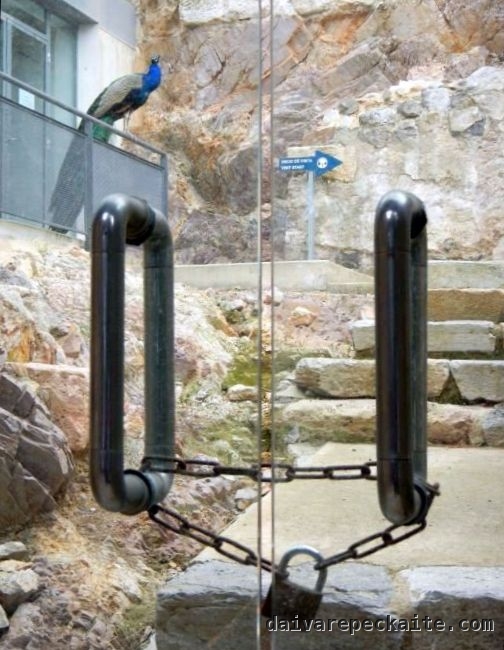
Locked doors in Cartagena
Ironically, as I found this perfect image to summarize the vibe there, it also captured a hint that something extraordinary and colorful will happen. Indeed, the trip started getting better and better from then on.
On the bus from Murcia, most people seemed to be tourists. As if commanded by some inaudible voice, nearly all of them sat down on the right side of the bus. I wondered if Lonely Planet instructed readers to marvel at the views on the right side of the road. Indeed, the left side looked more industrialized, and the right side was greener, but not particularly spectacular. At the station, the crowd suddenly melted away, and I just followed some random people, vaguely knowing where the city center lies. There was no tourism information office and no maps at the station. I walked until I reached a spacious square, which apparently belongs to some technical university. Then I saw a small fortress on a hill and thought, this will be a good starting point.
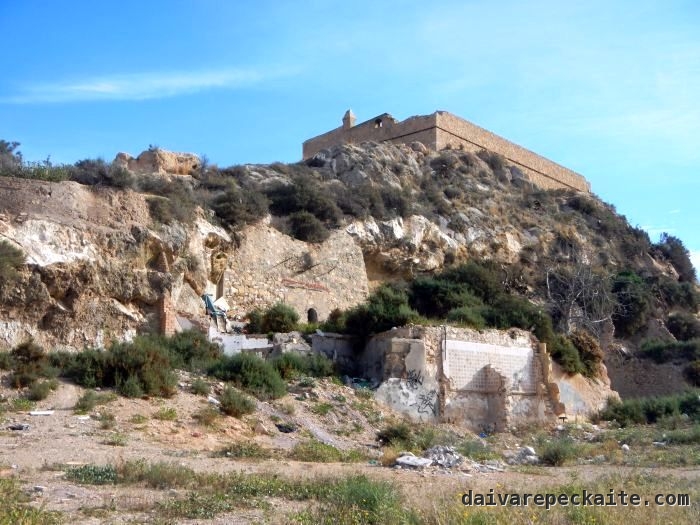
Fortress on a hill
Two men, looking like they had been sleeping rough, looked at me, surprised. As I walked further up, I saw a layer of trash covering the hill and a huge parking lot surrounding it. As another man emerged seemingly from nowhere, I noticed some holes in the hill, and I noticed that some were covered with blankets. Do homeless people actually live here? I certainly did not feel like invading their space with my camera, so I descended to the parking lot. Great first impression!
I walked to a long pedestrian street, going past a large church (of Caridad). A dog was howling sadly. I saw the first arrow for tourists, pointing at the closest tourist object – Augusteum. But when I reached it, huge doors of the building were closed. The next arrow pointed at Casa Fortuna – ancient ruins with frescoes. Surprise surprise – another closed door, as the object is only open on weekends.
Having found Plaza de San Francisco somehow, I saw a replica of headless Augustus.
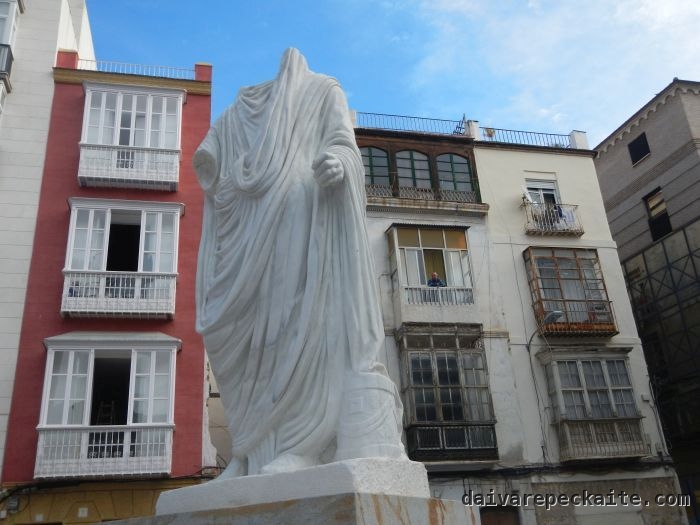
Plaza de San Francisco
Several senior citizens were hanging out on the square aimlessly. Others walked their dogs. Is it really the most beautiful town of Spain? Is this the place that merits so much praise? I walked further, my mind sarcastically reworking a few lines from a song by LeAnn Rimes:
Shut up, don′t want to hear another word about
Roman ruins and ancient history
And how you′re fallin′ head over heels
With pride
So what
Big deal
The next sightseeing spot I saw was Cerro del Molinete – a hill with Roman ruins. In the 19th century it was called Little Marseilles and known for its bars and brothels. Yet when archaeologists discovered that Roman ruins should be there, all this layer of industrial heritage was removed, preserving only one remnant of a 19th century building. A 16th century mill and a Civil-War-era shelter is preserved much better.
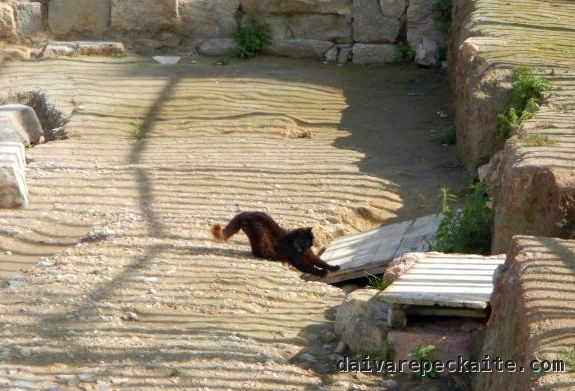
Molinete excavation site
There is a nice little park at the top of the excavation site, and even a guide, offering his services for free. There is not much he can tell what I couldn’t read, but it was nice to talk to an actual person after walking around like a ghost and finding closed doors everywhere. The guide directed me to another side of the excavation site, with a free entrance to the ruins, including a tavern, a thermal spa and remnants of a residential building with impressive vivid wall decorations.
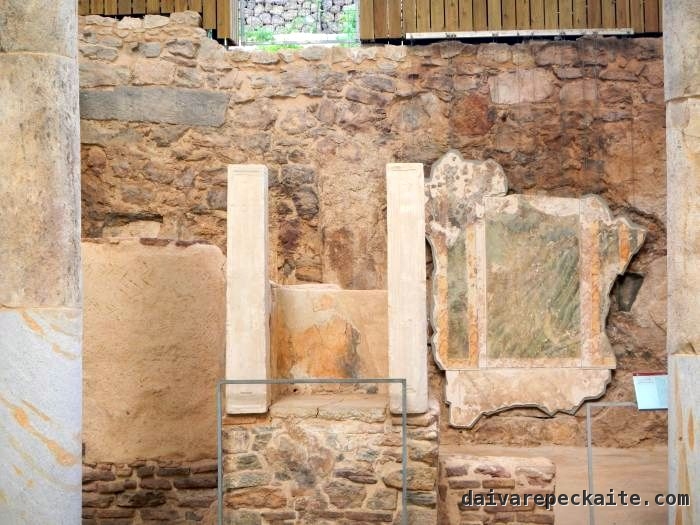
Molinete excavation site
After returning to the main street, I walked till the end until I reached the municipality building with the first tourism information office. Now we talk! I got a map and a price list at the municipality, but decided to go to the port first. Against the advise of the tourism office, I did not have lunch on Calle Mayor (the main street) and chose a place close to the Arsenal building. It was still very touristy, and they charged me for bread, which I didn′t ask for, so let′s not mention it in a positive light. I′ll just say that they offer ‘Roman squid’, which is just regular fried squid, and leave it at that.
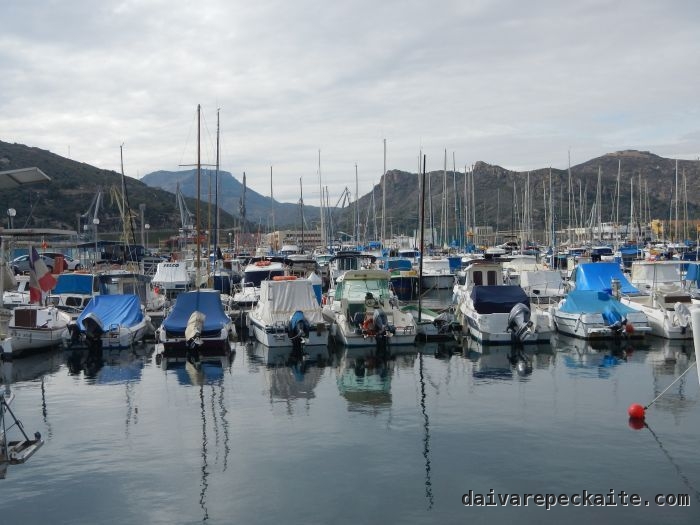
Port
The marina makes a pleasant stroll. There are several sculptures placed creatively in different places – notably a whale’s tail and this, hm, naked person who mourns ‘victims of terrorism’.
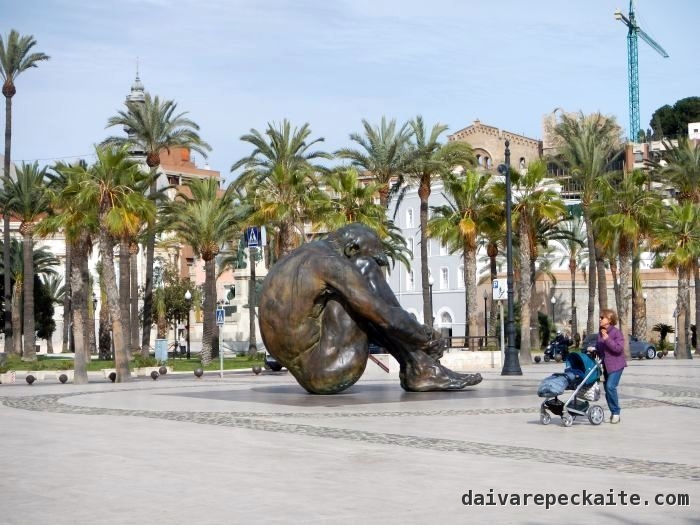
Monument to victims of terrorism
Having had my coffee, I crossed the city wall back into the old town and walked up to Torres park. There was a nice panoramic view from there, allowing me to recognize churches and other buildings I had seen previously.
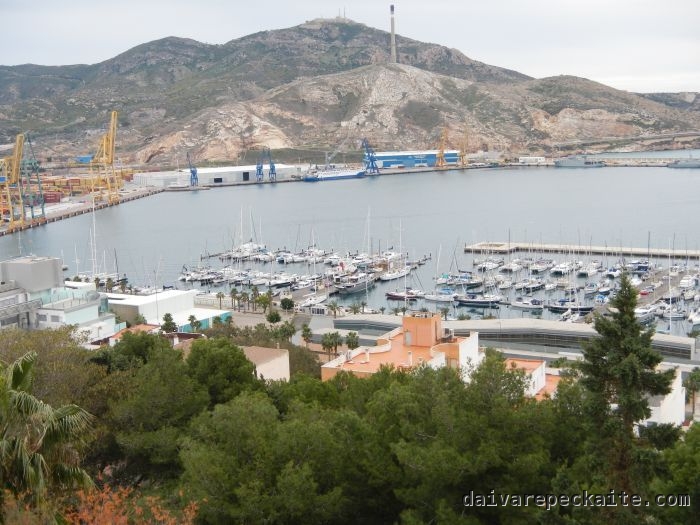
View from the castle museum
There is a castle on top, and I hesitated whether it is worth paying to enter the castle museum. I knew that castle museums tend to be tacky. Yet it was worth it, if anything, just for the peacock you saw in the first photo.
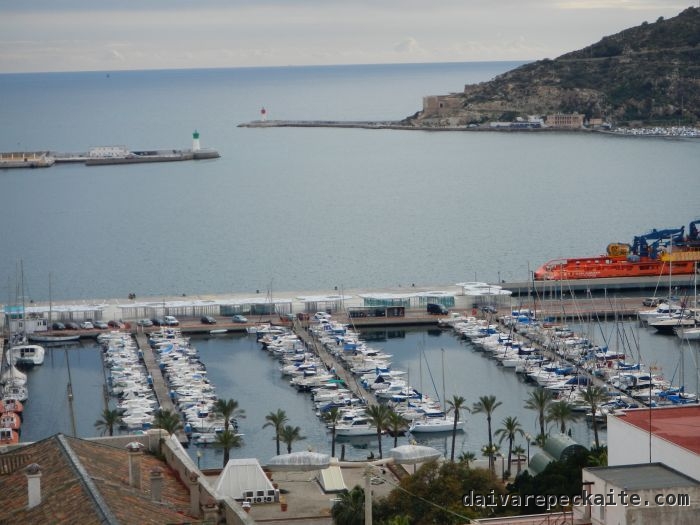
From the hill
Inside there is a video about the town′s history, small models of the castle during different times with moving hologram people, armor, various medieval documents, computer game machines, and lots of explanatory texts. The way out leads visitors to a souvenir shop, and, since I stayed almost until 5:30 pm, when the museum closes, it was written in the employee′s face how much he hoped that I won′t buy or ask anything and just let him go home. As soon as I walked out, he locked the door.
For those who want to save 6 euros, the Roman museum, which is close to the municipality and highly advertised by the tourism office there, is perfectly visible from the top of the hill. So unless you′re into touching Roman ruins and as long as you have a camera which can zoom, it′s worth seeing the theater from up there – even from the lower, free part of the hill.
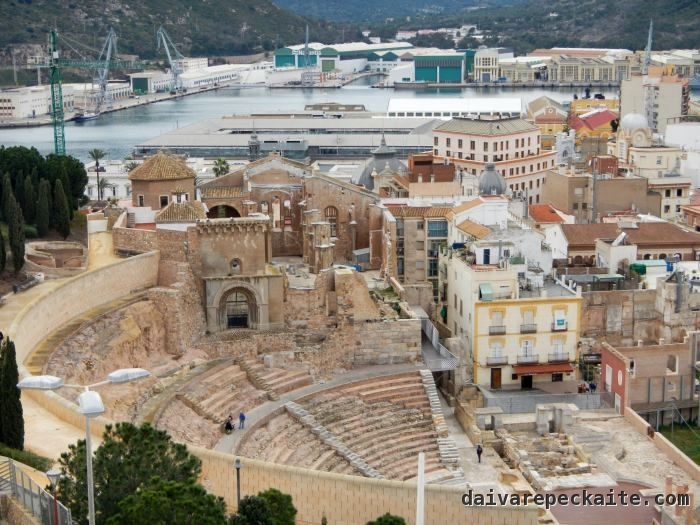
Roman theater
Enjoying the views, I thought how there could be a much better way to form one′s impression of Cartagena. So my advice is,
- From the station, head to Duque street and go straight, taking a quick look at cute parks, classical buildings, and creative designs like the Aquirra house;
- Give yourself some time to wander around small streets adjacent to the Roman wall;
- Visit the castle museum or at least Torres park to enjoy panoramic views. Look at the Roman theater and the sea from above, then locate objects you want to see. There are some places with a lowdown of important buildings;
- When you′re tired of panoramic views, cross the city wall through a tunnel with interesting murals at Gisbert street;
- It′s time for coffee and perhaps lunch, and you will find Casa del mar cafe placed there very conveniently. It is not touristy, has a wi-fi and is right between the sea and the town;
- Take a walk by the seashore and visit more museums, like the Maritime museum, if you′re into that;
- Walk into Calle Mayor past Arsenal, which is a cute building, and take a glance at the buildings of interest;
- If there is still time, visit those weird rarely opened objects;
- Definitely don′t miss the entrance to Molinete excavation site. It doesn′t take much time, unless you get totally mesmerized by these wall decorations.
I believe that with proper planning Cartagena can feel like a nice place to visit, and who knows, maybe I will go there again, better prepared and with more time on my hands.
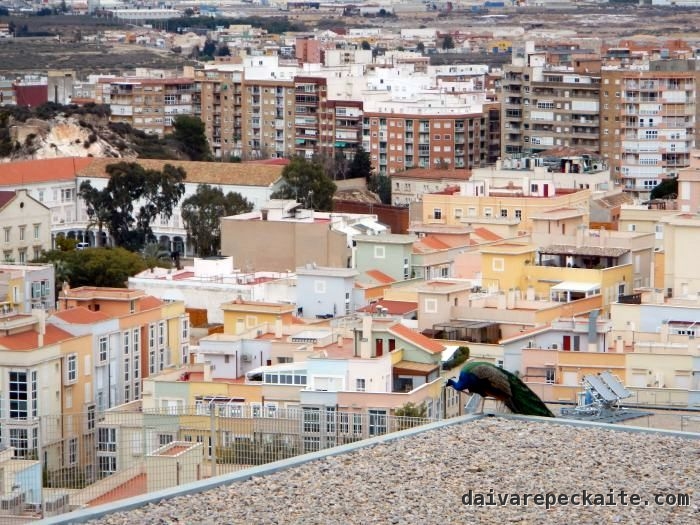
Peacock panorama

